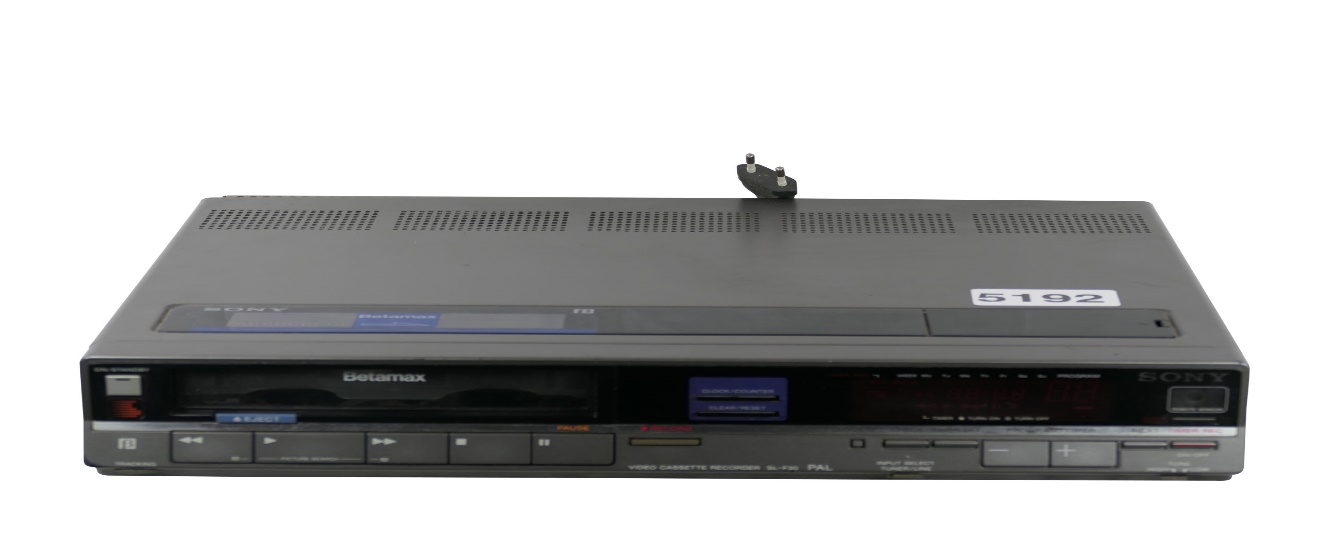Project Management Assessment 4
Title: Sony Betamax: An Analysis of Its Failure
Student Name:
Student ID:
Course:
Professor:
Date:
Contents
2. Background of the Failed Project 2
1. Introduction
2. Background of the Failed Project

Underlying Causes and Reasons for Undertaking the Project:
Despite these well-founded reasons for undertaking the project, the Sony Betamax ultimately faced challenges that hindered its success, leading to its eventual failure in the competitive market landscape.
3. Scope/Objectives of the Failed Project
Design: The Sony Betamax was designed as a home video tape recording system that aimed to deliver superior video quality and compactness compared to its competitors. The system featured a small tape cassette, which was innovative at the time, and utilized a helical scan recording technology to enhance image clarity. The Betamax machine was engineered to be user-friendly, with controls designed to facilitate easy recording and playback. The design emphasized high resolution and durability, setting it apart from existing bulky and lower-quality video recording systems.
Marketing and Distribution: Substantial resources were allocated for marketing campaigns and distribution networks to promote Betamax and ensure its availability in the market.
Overall Funding: Sony invested heavily in the Betamax project, with funding directed towards R&D, production, and marketing. The company committed millions of dollars to ensure that the technology was cutting-edge and that the product could compete effectively in the market. The investment also covered the costs associated with developing partnerships and licensing agreements.
Despite these efforts and investments, the Betamax project ultimately faced challenges that led to its failure in the competitive home video recording market.
4. Planning/Execution of the Failed Project
Work Breakdown Structure (WBS): The Work Breakdown Structure for the Sony Betamax project involved dividing the project into manageable sections to ensure systematic development and execution. The main components of the WBS included:
Manufacturing:
Production Setup: Establishing manufacturing processes and facilities for Betamax machines and tapes.
Distribution Channels: Setting up distribution networks to ensure widespread availability of Betamax products.
Work Packages: Each major component of the WBS was further divided into specific work packages:
Timelines: The project followed a structured timeline:
1972-1974: R&D phase, including design, prototype development, and testing.
Betamax Tapes: The video tapes compatible with the Betamax system.
Marketing Materials: Promotional content and advertisements to support the product launch.
Cost Accounts:
R&D Costs: Significant expenditure on research, development, and technology refinement.
Manufacturing Team: Oversaw production processes and quality control.
Marketing Team: Managed market research, promotional activities, and distribution strategies.
5. How the Project Failed
Consumer Adoption Issues: Betamax faced challenges in gaining widespread consumer adoption. The higher cost of Betamax machines and tapes compared to VHS products deterred potential buyers. This price disparity limited Betamax's appeal to a broader audience.
Recording Time Limitations: One of Betamax's major drawbacks was its shorter recording time compared to VHS. While Betamax offered superior image quality, the limited recording capacity was a significant disadvantage for consumers who wanted to record longer television programs or movies. This limitation became a critical factor in consumer preference for VHS.
6. Why the Project Failed
Intense Market Competition: The primary competitor, VHS, emerged as a formidable adversary due to its longer recording time and lower cost. While Betamax initially offered superior video quality, VHS's ability to record longer content at a lower price made it more appealing to consumers. This competitive edge allowed VHS to capture a larger market share and eventually dominate the home video recording market.
Higher Costs: Betamax machines and tapes were priced higher than their VHS counterparts. The premium pricing was a significant barrier to widespread consumer adoption. In a price-sensitive market, the higher cost of Betamax products made them less attractive compared to the more affordable VHS options.
7. Recommendations
To ensure the success of the Sony Betamax project, several strategic adjustments could have been made:
Competitive Pricing Strategy: Sony should have adopted a more competitive pricing strategy for Betamax machines and tapes. By reducing the cost of Betamax products, Sony could have attracted a broader consumer base and positioned itself more favorably against the VHS competition. Competitive pricing would have made Betamax more accessible and appealing to price-sensitive customers.
Consumer Feedback Integration: Actively seeking and integrating consumer feedback into the development process could have helped address user needs and preferences more effectively. By understanding consumer concerns and adjusting the product accordingly, Sony could have improved the overall user experience and increased satisfaction with Betamax.
Implementing these recommendations could have improved Sony Betamax’s market competitiveness and potentially altered its trajectory in the home video recording industry.
8. Conclusion
9. References
Auster, E. (1984) The Betamax Case: A Legal Perspective. New York: Oxford University Press.
Baker, M. (2016) The Rise and Fall of Betamax: A Case Study in Technological Failure. Journal of Business and Technology, 10(2), pp. 45-60.
Watson, P. (2017) Market Strategies and Failures in the Consumer Electronics Industry. Harvard Business Review, 95(4), pp. 78-85.





